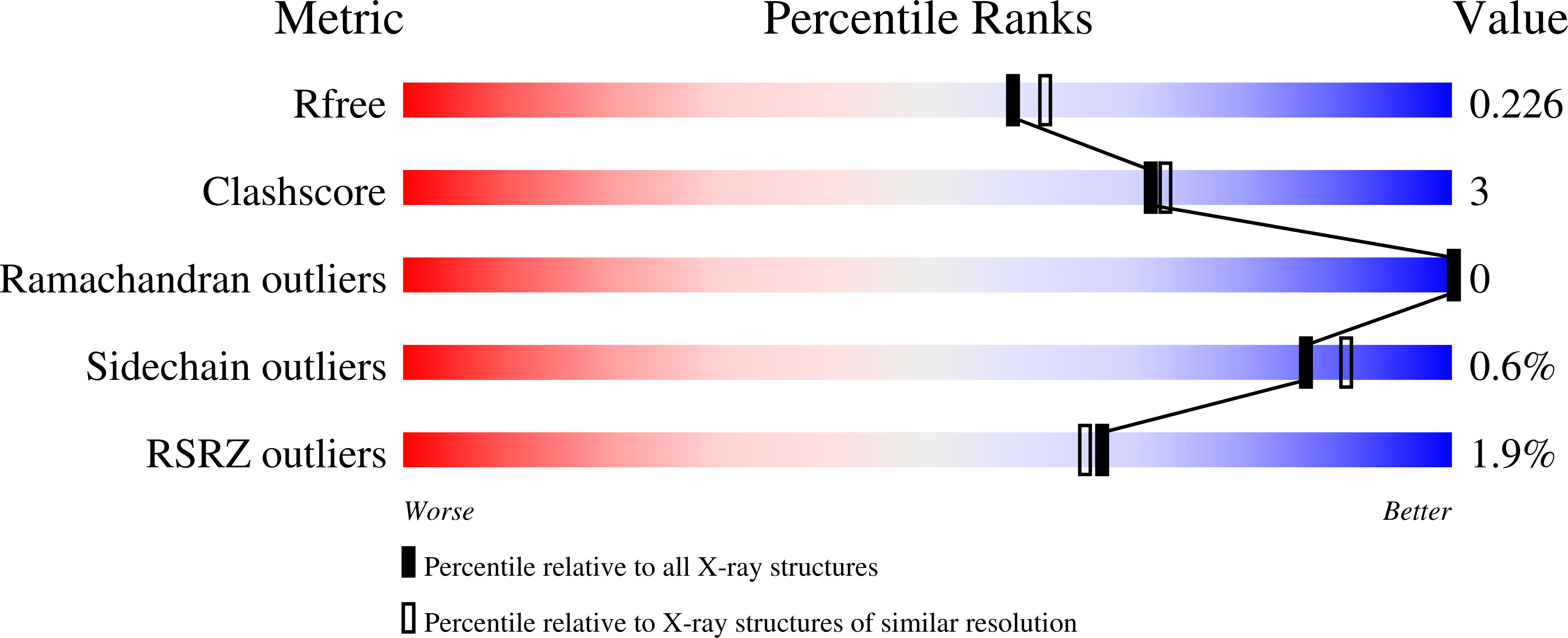Structure and reaction mechanism of a novel enone reductase.
Hou, F., Miyakawa, T., Kitamura, N., Takeuchi, M., Park, S.B., Kishino, S., Ogawa, J., Tanokura, M.(2015) FEBS J 282: 1526-1537
- PubMed: 25702712
- DOI: https://doi.org/10.1111/febs.13239
- Primary Citation of Related Structures:
4QLX, 4QLY - PubMed Abstract:
Recently, a novel gut-bacterial fatty acid metabolism, saturation of polyunsaturated fatty acid, that modifies fatty acid composition of the host and is expected to improve our health by altering lipid metabolism related to the onset of metabolic syndrome, was discovered in Lactobacillus plantarum AKU 1009a. Enzymes constituting the pathway catalyze sequential reactions of free fatty acids without CoA or acyl carrier protein. Among these enzymes, CLA-ER was identified as an enone reductase that can saturate the C=C bond in the 10-oxo-trans-11-octadecenoic acid (KetoB) to produce 10-oxo-octadecanoic acid (KetoC). This enzyme is the sole member of the NADH oxidase/flavin reductase family that has been identified to exert an enone reduction activity. Here, we report both the structure of holo CLA-ER with cofactor FMN and the KetoC-bound structure, which elucidate the structural basis of enone group recognition of free fatty acids and provide the unique catalytic mechanism as an enone reductase in the NADH oxidase/flavin reductase family. A 'cap' structure of CLA-ER underwent a large conformational change upon KetoC binding. The resulting binding site adopts a sandglass shape and is positively charged at one side, which is suitable to recognize a fatty acid molecule with enone group. Based on the crystal structures and enzymatic activities of several mutants, we identified C51, F126 and Y101 as the critical residues for the reaction and proposed an alternative electron transfer pathway of CLA-ER. These findings expand our understanding of the complexity of fatty acid metabolism. The atomic coordinates have been deposited in the Protein Data Bank (PDB), www.pdb.org (PDB ID 4QLX, 4QLY).
Organizational Affiliation:
Department of Applied Biological Chemistry, Graduate School of Agricultural and Life Sciences, University of Tokyo, Japan.















